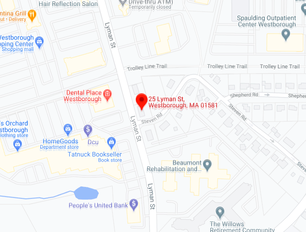Holiday Stress - Are You Prepared?by Kerrie Toole, LICSW
Holidays can be a time of togetherness and celebration for many, while for others, there can be significant amounts of stress and loneliness. This time of year, I often work with my clients to develop a “Cope Ahead” plan for the holidays, so they can be prepared for tensions or stressors that often arise. The first step of creating a “Cope Ahead” plan is to get clear on what your boundaries and limits are, before going into any particular setting. Boundaries are internal facing - these are developed by having self-awareness of where your vulnerabilities or sensitivities are, and what you will or will not do in response to your environment. Limits are external facing - for example, how do you express to someone that you are not comfortable continuing a discussion on a certain topic, or how do you talk with someone about expectations prior to an event. The best way to confidently set boundaries and limits that stick is to be proactive. When we are already in a stressful situation and try to set boundaries and limits in the heat of the moment, our actions may come from a place of overwhelm. If overwhelmed, we may overshoot the mark of what we are trying to accomplish, and then later feel guilty. By creating a structured plan ahead of time, we can avoid going into a holiday event feeling on edge and waiting for that “thing” that often happens that leads us to explode or feel hurt, angry, or sad. Instead, we can have confidence in a rehearsed response, and go into situations expecting to be effective when faced with a challenging interaction. It’s important to note here that sometimes being effective is not necessarily about being “right.” If we try to convince others with a different view that our perspective is “right” and they are “wrong,” usually that results in an argument. That’s probably not the energy we’re looking for during a holiday gathering. So we can ask ourselves, “what is the most effective thing I can do in this situation?” Consider how you want to feel about yourself and your choices. What will make you most proud of yourself? Part of planning ahead of time for the holidays is to have a game plan about what resources you can use during times of stress, and that those resources are available when needed. Here are some of the common questions I ask clients when we are developing their “Cope Ahead” plan for the holidays:
In order to be most prepared in challenging situations, I recommend that people document their “Cope Ahead” plans on their phones or on paper, and keep the plans with them. If you plan to use coping strategies such as a soothing smell, a fidget, coloring, an ice pack for your face to cool yourself down, etc., be sure to bring those items with you. Additionally, having another person to remind you of your “Cope Ahead” plan in the moment could be quite helpful - think of a code word that can be a reminder or a signal that you have effective skills that you can apply. By taking a proactive approach to planning effective responses to stressful situations, holiday events can be more enjoyable (or at least tolerable) this season. Coping Ahead for the HolidaysBy Niamh Smithers, M.A.
Whether you get along with your family, have difficult family relationships, celebrate holidays with friends, or don’t celebrate certain holidays at all, this time of year can bring up a lot of mixed emotions for people. Not only are there often added stressors around finances, relationships, and social obligations, but the time change and colder weather can impact each individual differently. And while each person is unique in how they navigate the stressors involved with this time of year, it can be helpful to prepare a plan ahead of time for how to handle difficult emotions or situations to feel more confident going into these experiences. I often find myself struggling during this time of year due to the lack of sunlight, the colder weather, and the overstimulation involved with holiday shopping, socializing, etc. My family typically hosts Thanksgiving and Christmas gatherings, which can make it even more difficult to set limits around how much time I’m spending with family. I find myself wanting to escape to charge my “social battery” when it’s running low more regularly, too. Whether you’re the house hosting, traveling for the holidays, or having a solo stay-cation this winter season, here are some helpful tips to prepare yourself: 1. Manage physical vulnerabilities
2. Check-in with your emotions
3. Make a list of enjoyable activities
4. Make your “escape” plan:
5. Be kind to yourself!
Navigating Mental Health Support During a Crisis: What You Need to Know By Kerrie Toole, LICSW, Executive Director
As September marks National Suicide Prevention Month, it’s a meaningful time to reflect on the resources available when we or someone we care about faces a mental health crisis. While many people are familiar with emergency numbers like 911, 988, or the Samaritans hotline, there are also other, often more accessible, options for getting help right in your community. Today, I want to walk through what you can expect when seeking emergency mental health services, so that if the time comes, you feel informed and supported. Resources You Can Turn to in a Crisis For those in Massachusetts, the Massachusetts Behavioral Health Help Line offers real-time support 24/7. Whether you prefer to call or text, help is just a moment away at 833-773-2445. Additionally, Community Behavioral Health Centers (CBHCs) provide 24/7 walk-in services, as well as mobile services, meaning they can come to your home or another location if that’s where you feel safest. You can find more details about these services here. If you're local to the Metrowest area of Massachusetts, there are several Emergency Service Provider (ESP) agencies that can conduct emergency assessments and provide care without needing to go to the emergency room. In some cases, these agencies are also the ones conducting evaluations if you do go to the ER. Here's a quick guide to some of these providers:
What Happens During an Emergency Mental Health Evaluation Whether you’re evaluated in an emergency room, at a CBHC, or through an ESP agency, the process is quite similar and designed with care and thoroughness in mind. A trained clinician will meet with you—and any supportive person you have with you—to assess the situation. They’ll look at both risk and safety factors and, with your permission, may gather additional information from any mental health providers you’re currently seeing. Once the clinician has all the necessary information, they’ll consult with a team of professionals to determine the most appropriate level of care for you. This could be anything from a referral for outpatient services to inpatient hospitalization. If you're in an emergency room, there will be an added step of a medical evaluation to ensure there are no underlying physical issues that need attention. Understanding Your Care Options After an evaluation, the agency will help you access the right level of care. Here’s a breakdown of what that could look like:
You May Not Need to Go to the Emergency Room In many cases, you can access these services without stepping foot in an emergency room. By reaching out directly to your local ESP or CBHC, you can get the help you need in a more familiar, less overwhelming environment. Navigating a mental health crisis can be a deeply personal and often overwhelming experience, but knowing what to expect and who to call can make all the difference. Whether it's through a quick text, a phone call, or a walk-in appointment, support is available—and it’s closer than you might think. If you or someone you know is struggling, don’t hesitate to reach out. There’s help, hope, and people ready to stand by your side. |
Archives
May 2025
Categories |
Mission Statement
Castlebrook Counseling Services, Inc. is a group of private practice clinicians with a shared goal of strengthening our community by providing therapy and clinical support designed for children, adults, and families to successfully meet life’s challenges.
 RSS Feed
RSS Feed

